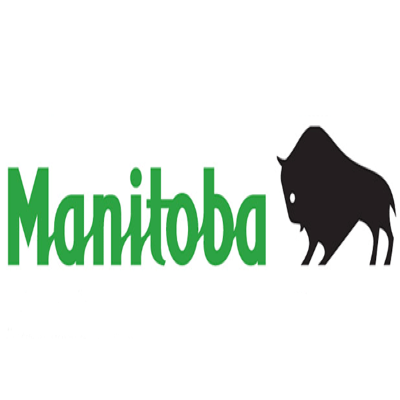Emergency
Type of resources
Available actions
Topics
Keywords
Contact for the resource
Provided by
Formats
Representation types
Update frequencies
status
-

During a declared emergency event, this file represents an aggregated dataset that shows all of the active Orders and Alerts in the Province as initiated by the Local Governments or First Nations. When an Order or Alert is rescinded, its status changes to All Clear. The polygon is removed from this layer and copied to the [Historical Orders and Alerts dataset](https://catalogue.data.gov.bc.ca/dataset/historical-orders-and-alerts).
-

This file represents an aggregated dataset that shows previously active Orders and Alerts in the Province as initiated by Local Governments or First Nations. Start dates, re-installment dates and All Clear Dates for each Evacuation Order and Alert are included in this multipart polygon dataset. The dataset includes records beginning summer 2017 until the present day. Orders and Alerts that are currently active are found in [Evacuation Orders and Alerts](https://catalogue.data.gov.bc.ca/dataset/evacuation-orders-and-alerts).
-

The purpose of this feature layer is to provide the 2009 overland flooding boundary in the Red River Valley. This dataset shows the extent of peak overland flooding in the Red River Valley in 20 09 . Data is based on RADARSAT – 1 satellite imagery. During processing, the raw data set was resampled to 12.5 meter pixel resolution, then classified using PCI Geomatica software which is a specialized software designed to manipulate space born imagery. The final output depicting the flooding boundary is available as a TIFF or Shapefile. Launched in November 1995, RADARSAT-1 was a Canadian-led project which provided useful information to both commercial and scientific users in such fields as disaster management, agriculture, cartography, hydrology, forestry, oceanography, ice studies and coastal monitoring. Equipped with a powerful synthetic aperture radar (SAR) instrument, it acquired images of the Earth day or night, in all weather and through cloud cover, smoke and haze. As of March 2013, the satellite was declared non-operational and is no longer collecting data. Many applications were developed to take advantage of RADARSAT-1 capacity for detecting the presence of water. These included monitoring flooding and the build-up of river ice, and mapping the melting of snow-covered areas. When used for flood monitoring, RADARSAT-1 data helped assess the impact of flooding, predicted the extent and duration of floodwaters, analyzed the environmental impact of water diversion projects, and developed flood mitigation measures. Fields Included:FID : Internal feature numberNAME : Flooded area nameAREA_SQKM : Size of flooded area
-

The purpose of this feature layer is to provide the 1997 overland flooding boundary in the Red River Valley. This dataset shows the extent of peak overland flooding in the Red River Valley in 1997 . Data is based on RADARSAT – 1 satellite imagery. During processing, the raw data set was resampled to 12.5 meter pixel resolution, then classified using PCI Geomatica software which is a specialized software designed to manipulate space born imagery. The final output depicting the flooding boundary is available as a TIFF or Shapefile. Launched in November 1995, RADARSAT-1 was a Canadian-led project which provided useful information to both commercial and scientific users in such fields as disaster management, agriculture, cartography, hydrology, forestry, oceanography, ice studies and coastal monitoring. Equipped with a powerful synthetic aperture radar (SAR) instrument, it acquired images of the Earth day or night, in all weather and through cloud cover, smoke and haze. As of March 2013, the satellite was declared non-operational and is no longer collecting data. Many applications were developed to take advantage of RADARSAT-1 capacity for detecting the presence of water. These included monitoring flooding and the build-up of river ice, and mapping the melting of snow-covered areas. When used for flood monitoring, RADARSAT-1 data helped assess the impact of flooding, predicted the extent and duration of floodwaters, analyzed the environmental impact of water diversion projects, and developed flood mitigation measures. Fields Included:FID : Internal feature numberNAME : Flooded area nameAREA_SQKM : Size of flooded area
-

This data set shows the notices and alerts published on [the City of Montreal's website] (https://montreal.ca/avis-et-alertes). Advisories and alerts provide important information to the public in case of emergency and in situations that may have an impact on daily life (boil water advisory, construction, pool closure, etc.).**This third party metadata element was translated using an automated translation tool (Amazon Translate).**
-

Punctual location of emergency or emergency telephones installed on the road network.**This third party metadata element was translated using an automated translation tool (Amazon Translate).**
-

An interactive web map illustrating the locations and service details of Rural Health Care Facilities in Manitoba, outside the Winnipeg Regional Health Authority. An interactive web map illustrating the locations and service details of Rural Health Care Facilities in Manitoba, outside the Winnipeg Regional Health Authority. Select a facility from the drop down list to filter out all but the facility of interest, use the search bar, or simply explore and click on facilities in the map for details. Pop-ups include the following information:Community Name Facility Name Emergency Department Availability Percentage of Time Open (2015) Nearest Alternate Emergency Department Acute Care Availability Acute Care Number of Beds Acute Care Occupancy Rate (2015-16) Transitional Care Availability Transitional Care Number of Beds Transitional Care Occupancy Rate (2015-16) Diagnostic Care Services Available Emergency Medical Services Station Nearest Alternate Emergency Medical Services Station Personal Care Home Personal Care Home Number of Beds
-

An interactive web map illustrating the future state of Emergency Medical Service (EMS) Facilities in Manitoba outside the Winnipeg Regional Health Authority. An interactive web map illustrating the future state of Emergency Medical Service (EMS) Facilities in Manitoba outside the Winnipeg Regional Health Authority. The map includes points representing the future locations of EMS facilities. Polygons representing drive time catchment areas (9, 15, and 30 minutes) for each EMS facility are also shown, including the approximate population served (Statistics Canada 2011 census data) and incident responses (2015/16 data) within each catchment area . Note that this information is only available for rural Manitoba and areas south of 53°N. Pop-ups for the future EMS Facilities display the following information: Community Name Facility Name Pop-ups for the future catchment areas display the following information: Community Name Facility Name Total Population in 9, 15, and 30 minute night time catchment areas (south of 53°N only) Total Incidents ((2015/16) in 9, 15, and 30 minute night time catchment areas (south of 53°N only)
-

The purpose of this feature layer is to provide the 2011 overland flooding boundary in the Red River Valley. This dataset shows the extent of peak overland flooding in the Red River Valley in 2011. Data is based on RADARSAT – 1 satellite imagery. During processing, the raw data set was resampled to 12.5 meter pixel resolution, then classified using PCI Geomatica software which is a specialized software designed to manipulate space born imagery. The final output depicting the flooding boundary is available as a TIFF or Shapefile. Launched in November 1995, RADARSAT-1 was a Canadian-led project which provided useful information to both commercial and scientific users in such fields as disaster management, agriculture, cartography, hydrology, forestry, oceanography, ice studies and coastal monitoring. Equipped with a powerful synthetic aperture radar (SAR) instrument, it acquired images of the Earth day or night, in all weather and through cloud cover, smoke and haze. As of March 2013, the satellite was declared non-operational and is no longer collecting data. Many applications were developed to take advantage of RADARSAT-1 capacity for detecting the presence of water. These included monitoring flooding and the build-up of river ice, and mapping the melting of snow-covered areas. When used for flood monitoring, RADARSAT-1 data helped assess the impact of flooding, predicted the extent and duration of floodwaters, analyzed the environmental impact of water diversion projects, and developed flood mitigation measures. Fields Included:FID : Internal feature numberNAME : Flooded area nameAREA_SQKM : Size of flooded area
-

An interactive web map illustrating the current state of Emergency Medical Service (EMS) Facilities in Manitoba outside the Winnipeg Regional Health Authority. An interactive web map illustrating the current state of Emergency Medical Service (EMS) Facilities in Manitoba outside the Winnipeg Regional Health Authority, as well as both the daytime and night time catchment areas of rural EMS Facilities south of 53°N. The map includes points representing the current locations of EMS facilities. Polygons representing daytime or night time drive time catchment areas (9, 15, and 30 minutes) for each EMS facility are also shown, including the approximate population served (Statistics Canada 2011 census data) and incident responses (2015/16 data) within each catchment area . Note that this information is only available for rural Manitoba and areas south of 53°N. Pop-ups for the current EMS Facilities display the following information: Community Name Facility Name Pop-ups for the current catchment areas display the following information: Community Name Facility Name Total Population in 9, 15, and 30 minute night time catchment areas (south of 53°N only) Total Incidents ((2015/16) in 9, 15, and 30 minute night time catchment areas (south of 53°N only)
 Arctic SDI catalogue
Arctic SDI catalogue